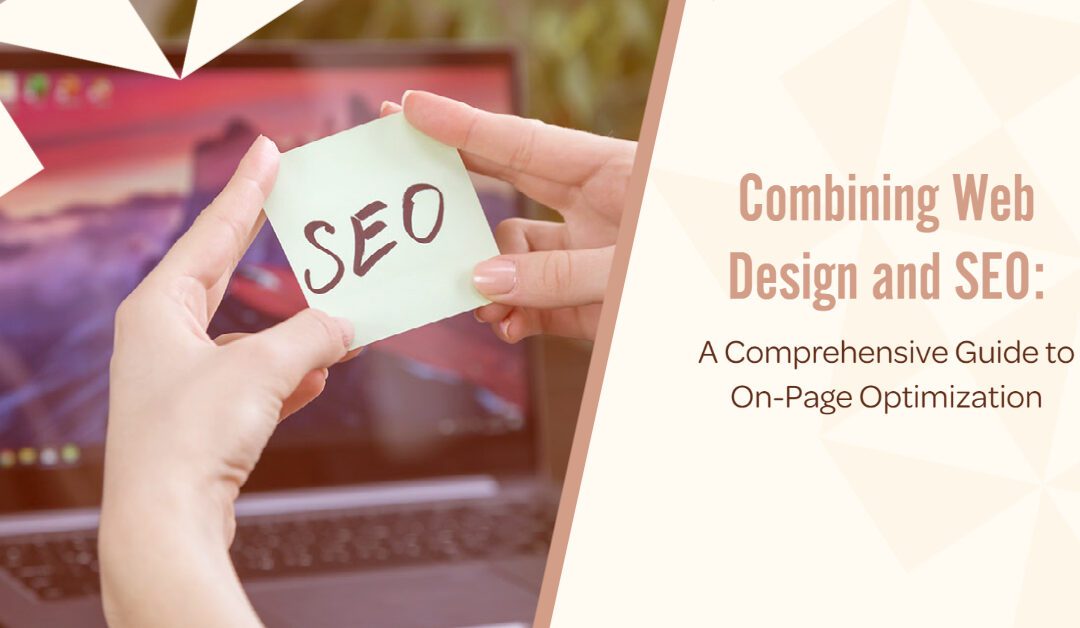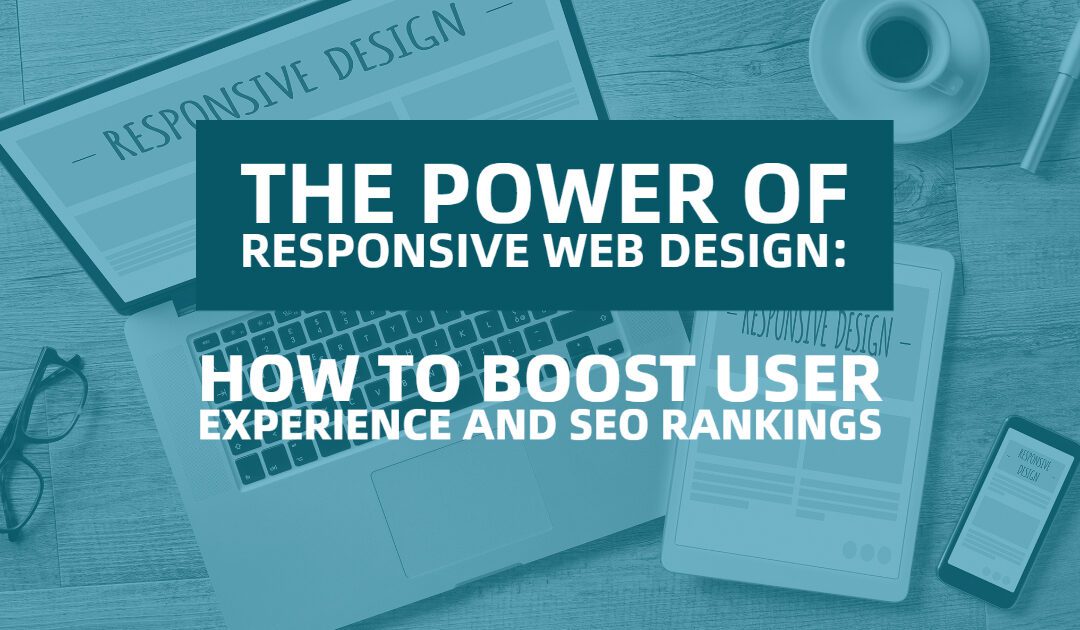
by Jeff Surdej | Mar 27, 2023 | Website Design
Creating a user-friendly website is essential for attracting and retaining visitors. In this article, we’ll share some simple tips on how to make your website easy to use and engaging. Follow these tips, and you’ll have a fantastic website that your visitors will love! And, if you need help building your website, Surdej Web Solutions is here to help.
- Choose a Clear and Simple Design
A good website starts with a clear and simple design. Select colors that are easy on the eyes and a layout that is straightforward. Make sure the text is large enough to read and that the images are clear. A clean design will make it easy for people to use your website and want to come back again.
- Organize Your Content
Organize your content into sections or pages. Give each section a clear title that tells people what they will find in that part of the website. This will make it easy for your visitors to find what they are looking for and enjoy your website.
- Use Easy-to-Understand Words
When you write the text for your website, use words that are easy for everyone to understand. Avoid using big words or complicated phrases that might confuse your visitors. Instead, use simple language that gets your message across clearly.
- Make Navigation Simple
Navigation is how people move around your website. Make it easy for your visitors to find their way by using simple menus and buttons. Place the most important information at the top of the page so people can find it right away. Make sure your website works well on different devices, like computers, tablets, and smartphones.
- Use Helpful Images and Videos
Pictures and videos can make your website more interesting and fun to visit. Use images that help explain what you are talking about or show examples of what you are teaching. If you have a lot of information to share, consider making a short video that people can watch.
- Test Your Website with Real Users
Once your website is ready, ask your friends and family to try it out. Watch them as they use the website and see if they can find what they are looking for. Ask them questions about what they liked and what they found confusing. Use their feedback to make your website even better and easier to use.
- Keep Your Website Up to Date
It’s important to keep your website up to date with new information and updates. If you have a blog, try to write new posts regularly. If you have a calendar or events page, make sure to add new events as they come up.
- Be Patient and Keep Learning
Creating a great website takes time and practice. Don’t get discouraged if your website isn’t perfect right away. Keep learning new skills and trying new ideas to make your website better. Remember, the most important thing is that your visitors enjoy using your website and want to come back again.
If you’re looking for help building an easy-to-use and engaging website, Surdej Web Solutions is here to help. Our team of experts can guide you through the process and create a website that meets your needs and exceeds your expectations. Contact us today to get started on building the perfect website for your business or personal project.

by Jeff Surdej | Mar 23, 2023 | Website Design, WordPress
In this article, we’ll go over the basic steps you need to follow to learn how to launch a WordPress site.
Starting a website can be a daunting task, but with the help of tools like WordPress, it can be much easier. WordPress is a platform that allows you to create and manage your own website, without having to know how to code.
Here are 5 basic steps on how to launch a WordPress site:
- Step 1: Choose a domain name
The first step to launching your WordPress site is to choose a domain name. Your domain name is the web address that people will use to find your site. You want to choose a name that is easy to remember and relates to your website’s content. You can purchase a domain name from a domain registrar like GoDaddy or Namecheap.
- Step 2: Choose a hosting provider
Next, you’ll need to choose a hosting provider. A hosting provider is a company that provides the servers where your website will live. You want to choose a provider that is reliable and offers good customer support. Some popular hosting providers for WordPress sites include Bluehost, SiteGround, and DreamHost.
- Step 3: Install WordPress
Once you have your domain name and hosting provider, you can install WordPress. Many hosting providers offer a one-click installation process for WordPress, making it easy to set up your site. Alternatively, you can download the WordPress software from the WordPress website and install it manually.
- Step 4: Choose a theme
Now that you have WordPress installed, you can choose a theme. A theme is a design template that determines the look and feel of your website. WordPress offers a wide range of free and paid themes that you can choose from. You can also customize your theme by adding your own images, colors, and fonts.
- Step 5: Add content
Finally, you can start adding content to your website. This can include pages like an “About” page, a “Contact” page, and any other pages that are relevant to your website’s content. You can also add blog posts to your site to share your thoughts and ideas with your readers.
While launching a WordPress site can be easy, it can still be overwhelming for some people. That’s where Surdej Web Solutions comes in. We are a website design firm that specializes in creating and managing WordPress sites. We can help you with every step of the process, from choosing a domain name to adding content to your site. We can even help you with search engine optimization (SEO), which is the process of optimizing your site to rank higher in search engine results pages.
By hiring Surdej Web Solutions, you can save time and ensure that your website is professional-looking and meets your specific needs. We work closely with clients to create a site that reflects their brand and achieves their goals. Plus, with our ongoing management services, you can focus on running your business while we take care of your website.
In conclusion, launching a WordPress site can be a great way to establish your online presence, but it can also be overwhelming. That’s why we recommend considering Surdej Web Solutions for all your website design and management needs. With our expertise and dedication to customer satisfaction, we can help you create a website that stands out and helps you achieve your business goals. Contact us today to learn more about our services and how we can help you launch your WordPress site.

by Jeff Surdej | Mar 20, 2023 | Search Engine Optimization, Website Design
Web design is important for creating a website that is both visually appealing and easy to use. However, it’s not enough to simply create a good-looking website. It’s also important to make sure that your website can be easily found by search engines like Google. This is where on-page SEO optimization comes in. On-page SEO optimization involves making changes to your website to improve its visibility on search engines.
One way to improve your website’s visibility is by using keywords. Keywords are the words that people might use when searching for your website. By including these keywords in your content, titles, and headings, you can help search engines understand what your website is about. For example, if you have a website about pet care, you might include keywords like “pet care tips” or “dog grooming” in your content.
Another way to improve your website’s visibility is by keeping your URLs simple. URLs are the addresses that people use to access your website. By keeping your URLs short and easy to remember, you can make it easier for people to find your website. You should also include keywords in your URLs whenever possible. For example, instead of using a URL like “www.example.com/page1,” you might use a URL like “www.example.com/pet-care-tips” to include a keyword in your URL.
Meta tags are another important element of on-page SEO optimization. Meta tags are special codes that help search engines understand your website. You should include a title tag and a description tag for each page on your website. The title tag should be a brief description of what your page is about, while the description tag should provide more information about your page. By including these tags, you can help search engines understand what your website is about and improve its visibility on search engine results pages.
Header tags are another important element of on-page SEO optimization. Header tags (like H1, H2, and H3 tags) are used to break up your content and make it easier to read. They also help search engines understand what your page is about. You should use header tags to organize your content and include keywords whenever possible.
Finally, you should optimize your images to improve your website’s visibility on search engines. This includes using descriptive file names and alt tags for your images. The file name should describe what the image is about, while the alt tag should provide a brief description of the image. By including these elements, you can help search engines understand what your images are about and improve your website’s visibility on search engine results pages.
In conclusion, on-page SEO optimization is an important part of web design. By following these tips, you can create a website that is both visually appealing and easy for search engines to find. Remember to include keywords in your content, keep your URLs simple, use meta tags and header tags, and optimize your images. With these strategies, you can improve your website’s visibility on search engine results pages and attract more visitors to your site. If you need help with your On-Page SEO, contact us for a FREE SEO Audit.

by Jeff Surdej | Mar 19, 2023 | Search Engine Optimization, Website Design
Have you ever visited a website on your phone, only to find that it’s hard to read or use because it’s not designed for smaller screens? That’s where responsive web design comes in. It’s a way of designing websites that work well on all devices, from phones and tablets to laptops and desktop computers.
Responsive web design is important for both user experience and SEO (Search Engine Optimization). Good user experience means that visitors enjoy using your website, which can lead to more time spent on your site and higher search engine rankings. SEO is the process of making your website more visible in search engine results, which can help bring more visitors to your site.
Here are some tips for creating a responsive website:
- Use flexible layouts: Instead of using fixed widths for your website elements, use percentages. This allows your site to automatically adjust to different screen sizes.
- Choose the right images: Make sure your images are high-quality and load quickly on all devices. You can use tools like image compression to reduce file sizes without losing quality.
- Use mobile-friendly navigation: Keep your navigation simple and easy to use on smaller screens. You might use a dropdown menu or hamburger icon for mobile devices.
- Test on different devices: Make sure to test your website on various devices and browsers to ensure it works well for everyone.
By using responsive web design, you can create a better experience for your users and improve your website’s SEO rankings. Contact Surdej Web Solutions today and get started on your new website.

by Jeff Surdej | Oct 26, 2022 | ADA Compliance
If you own or manage a website, chances are you good that you have heard or read something about ADA compliance and website accessibility. At Surdej Web Solutions, we get questions about ADA compliance, how it relates to websites and event more specifically, how to make a website ADA compliant. In this article, we’re going to break down everything about the ADA and how it applies to your website.
What is ADA?
In 1990, the United States signed into law the most important legislation related to accessibility and civil rights for people with disabilities. The Americans with Disabilities Act (ADA) prohibits discrimination against anyone based on ability or disability. The ADA draws on the precedent set by Section 504 of the Rehabilitation Act, which guarantees rights to people with disabilities in the government sector.
What does the ADA cover?
The ADA covers many different aspects of accessibility for people with disabilities. Title III of the ADA affects how businesses serve customers. It covers public areas and accommodation which apply to restaurants, businesses, theatres, doctors’ office, restaurants, parks, libraries and pretty much every other place of work.
The ADA features two primary requirements:
- Employers have to make accommodations for employees with disabilities to be able to do their jobs, including disability-friendly entrances, disability-friendly bathrooms, and the right kind of chairs, desks, and office equipment.
- Businesses of all types have to make it possible for customers with disabilities to access their services, requiring them to make modifications to their premises like wheelchair ramps, accessible bathrooms, American Sign Language (ASL) interpretations, and accommodation for service animals.
Who does the ADA Cover?
In 2018, President Obama signed major changes to the ADA into law. The biggest change involved the definition of disability. The original ADA defined a person with a disability as someone who has a condition that “substantially limits major life activities.” Under the 2018 amendment, “major life activity” was redefined to include daily activities like caring for oneself or performing manual operations. It was also extended to include impairments to major bodily functions like digestive and respiratory functions, and neurological impairments.
Who needs to be ADA compliant?
Pretty much every type and size of business has to comply with ADA legislation, for their customers and employees, if there are over 15 workers. The ADA affects places of entertainment, restaurants, large enterprises, small to medium businesses, retail stores, government offices, employment agencies, and more.
How does the ADA affect websites?
In 2018, there was a bigger push from disability rights activists, legal scholars and even court rulings that began to shed the light on how websites owners and developers were overlooking the ADA when it came to websites. In September 2018, Assistant Attorney General Stephen Boyd wrote an official letter to members of Congress explaining its mandatory that “goods, services, privileges, or activities provided by places of public accommodation be equally accessible to people with disabilities.”
Since that time, the number of lawsuits has skyrocketed and many businesses, schools and non-profit organizations have been forced to fix or re-develop their website to make it more accessible. The stats for the last two years paint a clear picture:
- There were at least 11,452 federal filings in 2021, which is a 320% increase over a short, eight-year period.
- And, as of 2020, 265,000 demand letters were sent to businesses that operated inaccessible websites.
In June of 2022, the Department of Justice released new guidance on implementing web accessibility standards and practices, clarifying that the ADA indeed covers web accessibility.
The expectation is the number of lawsuits will continue to climb because of these updated guidelines. 85% of ADA lawsuits in federal and state courts during 2018 were filed against small and medium retail businesses. More often than not, courts are siding with plaintiffs and which is forcing many small business owners to settle out of court. The cost of defending a lawsuit could destroy even a medium-sized business, but the average ADA website lawsuit settlement still comes to $35,000.
What are the ADA website compliance standards?
The DOJ has frequently referenced the Web Content Accessibility Guidelines (WCAG) 2.0 Level AA as the goal for website accessibility, even though this isn’t codified into law. At the moment, WCAG 2.1 is the best measure of web accessibility when it comes to federal law, and it’s unlikely that a WCAG 2.1 Level AA compliant website would be sued for inaccessibility.
How to make a website ADA compliant:
Now that we know the background, let’s talk about how to make a website ADA compliant. When referring to ADA compliance and the WCAG 2.1, there are a number of things that a website owner or developer must consider to make their site fully accessible. Here a list of some of the things to consider to get you started:
- Design the site and structure content so people with disabilities can enjoy the full use of your website. They need to be able to access content and navigate your website successfully. They also need to be able to engage with all the elements on your website.
- Everything from your website theme and colors, structure and content needs to be addressed.
- Website images must contain and an alternate title and description. The description should describe exactly what is being conveyed in the photo or image.
- Zoom text – Text must be able to be increased by up to 200%.
- Keep color contrast ratio in mind. Check the contrast ratio using tools like WebAIM’s Contrast Checker.
- Make sure to use distinctive links. Never use “click here” or “download.”
- Keep a consistent layout and navigation throughout the site.
- Check and make sure your can navigate your website using only the keyboard with a skip navigation option.
- Make sure your site has a Site Map and an accessibility statement with information for visitors to contact you for accessibility problems.
Again, the list above is a starting point. There are also many things that need to be considered with the html and site structure which we haven’t listed above.
There are many tools you can use to test your websites accessibility. Some of the more popular tools are:
- Using your Keyboard to navigate your website is a good starting point.
- Google Chrome Developers Tools offer an accessibility audit which can help you identify items that need attention.
- Accessible.org is a great source with documents that break down the WCAG Guidelines.
- Tools like the WAVE Web Accessibility Evaluation (WAVE) tool works great for you to view your site and to visually see any errors or issues.
All of the above tools are free and are great resources for you or your web developer to use to evaluate the accessibility of your website.
If you are looking for a quick and effective solution to your websites ADA compliance, we highly recommend the accessWidget by accessiBe. We believe in this widget so much that we installed it on our site (you can try it by clicking the icon in the bottom right corner or side of the page).
The accessWidget is the industry leading, AI powered solution that makes your site accessible and compliant quickly and cost efficiently. There is an annual license fee of $490 which may seem costly to some small business owners, but it is far less than any legal fees associated with a non-ADA compliant website. We think of it like we think of like an annual insurance payment.
By implementing this solution the benefits to you are the following…
- It helps to mitigate the legal risk of expensive lawsuits.
- It is a way to grow your business by reaching out to a huge (15% of the population), underserved, and extremely loyal consumer group.
- Finally, being inclusive is the right thing to do and sends a positive message about your brand.
If you’re interested in sign-up at Accessibe.com or contact us and we’ll get you signed-up!
Now you know how to make a website ADA compliant. If you need assistance, Surdej Web Solutions has been focused on building ADA compliant websites for years. We can help you with your site. Call us at 716-404-9343 or shoot us an email at in**@****ej.com.






Recent Comments